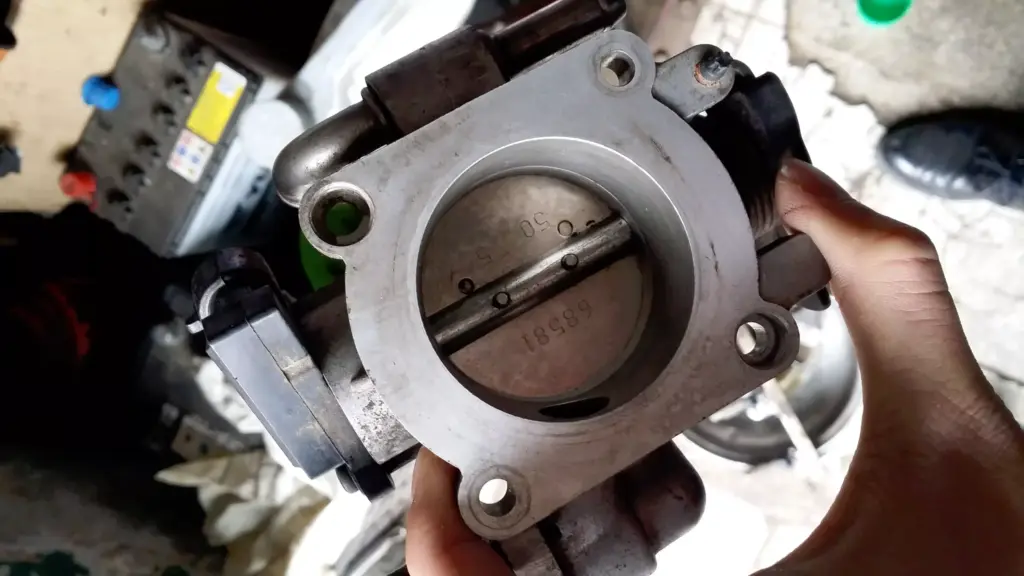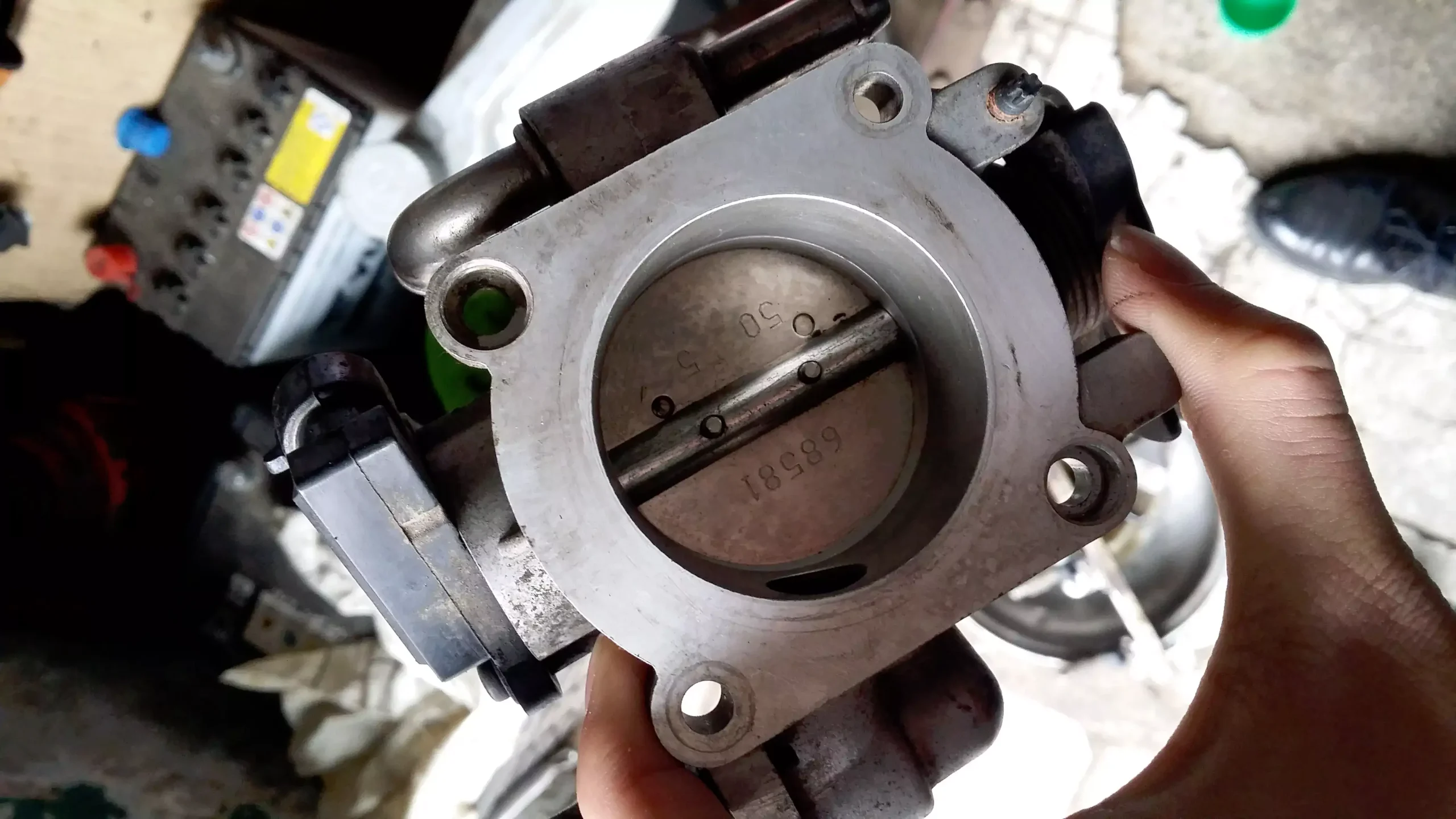
Can You Use Carb Spray on Throttle Body? A Comprehensive Guide
The question of whether you can use carb spray on a throttle body is a common one among car enthusiasts and mechanics alike. The short answer is yes, you can, but there are important considerations to keep in mind to ensure you’re doing it safely and effectively. This comprehensive guide will delve into the nuances of using carb spray on throttle bodies, covering everything from the differences between carburetors and throttle bodies to the best practices for cleaning and maintenance. Our goal is to provide you with the knowledge and confidence to tackle this task like a seasoned professional, avoiding common pitfalls and maximizing the performance of your vehicle.
In this article, we’ll explore the chemical composition of carb spray, its intended use, and how it interacts with the materials commonly found in throttle bodies. We’ll also discuss potential risks, safer alternatives, and preventative measures to keep your engine running smoothly. Whether you’re a seasoned mechanic or a DIY enthusiast, this guide will provide valuable insights into the proper use of carb spray on throttle bodies.
Understanding Carburetors and Throttle Bodies
To understand why the question of using carb spray on a throttle body arises, it’s essential to first understand the differences between these two engine components. Carburetors and throttle bodies both play crucial roles in delivering air and fuel to the engine, but they do so in fundamentally different ways.
Carburetors: The Traditional Fuel Delivery System
Carburetors are mechanical devices that mix air and fuel based on engine demand. They rely on vacuum created by the engine to draw fuel into the air stream. Carburetors have jets and passages that are prone to clogging with varnish and deposits over time, especially with the ethanol content in modern fuels. Carb spray is specifically formulated to dissolve these stubborn deposits and restore proper fuel flow.
Throttle Bodies: The Modern Airflow Control System
Throttle bodies, on the other hand, are primarily responsible for controlling the amount of air entering the engine. In modern fuel-injected engines, the fuel is delivered separately by fuel injectors, which are controlled by the engine’s computer (ECU). While throttle bodies don’t directly handle fuel, they can still accumulate deposits from oil vapor, blow-by gases, and airborne contaminants. These deposits can restrict airflow and negatively impact engine performance.
The key difference is that carburetors deal directly with fuel delivery, while throttle bodies primarily manage airflow in fuel-injected systems. This distinction influences the type of cleaning agents that are most appropriate for each component.
The Chemical Composition of Carb Spray and Its Effects
Carb spray typically contains a blend of strong solvents, detergents, and petroleum distillates designed to dissolve varnish, carbon deposits, and other contaminants. Common ingredients include:
- Acetone: A powerful solvent that quickly dissolves many organic compounds.
- Toluene: Another strong solvent used to break down stubborn deposits.
- Methanol: An alcohol that helps to dissolve water and prevent corrosion.
- Petroleum Distillates: A mixture of hydrocarbons that act as a carrier for the other ingredients and help to flush away loosened deposits.
While these chemicals are effective at cleaning carburetors, they can also be harsh on certain materials found in throttle bodies, such as:
- Sensors: Many modern throttle bodies contain sensitive electronic sensors, such as throttle position sensors (TPS) and idle air control (IAC) valves. Carb spray can damage these sensors, leading to inaccurate readings and engine performance issues.
- Coatings: Some throttle bodies have special coatings designed to reduce friction and improve airflow. Harsh chemicals in carb spray can strip these coatings, leading to increased wear and decreased performance.
- Rubber and Plastic Components: Carb spray can cause rubber and plastic components to swell, crack, or deteriorate over time.
Therefore, it’s crucial to understand the potential effects of carb spray on the specific materials used in your throttle body before using it.
When is it Appropriate to Use Carb Spray on a Throttle Body?
While not always the best choice, there are situations where using carb spray on a throttle body might be considered, particularly when dealing with stubborn deposits that other cleaners can’t remove. However, it’s essential to proceed with caution and take the following precautions:
- Identify the Throttle Body Type: Determine if your throttle body has any sensitive sensors or coatings that could be damaged by carb spray. Consult your vehicle’s service manual or the manufacturer’s website for specific information.
- Use Sparingly: Apply carb spray in small amounts, focusing on areas with heavy deposits. Avoid spraying directly onto sensors or electrical connectors.
- Ventilation is Key: Always work in a well-ventilated area to avoid inhaling harmful fumes.
- Clean Up Excess: Wipe away any excess carb spray with a clean, lint-free cloth to prevent it from damaging surrounding components.
Even with these precautions, it’s generally recommended to use a throttle body-specific cleaner whenever possible, as these are formulated to be safer for the materials commonly found in throttle bodies.
Throttle Body Cleaner: A Safer Alternative
Throttle body cleaner is specifically designed for cleaning throttle bodies without damaging sensitive components. These cleaners typically contain a milder blend of solvents and detergents that are less likely to harm sensors, coatings, and rubber/plastic parts. Many throttle body cleaners are also formulated to be oxygen sensor safe, meaning they won’t damage the oxygen sensors in your exhaust system.
When choosing a throttle body cleaner, look for products that are:
- Specifically labeled for throttle bodies: This indicates that the cleaner has been formulated with the materials used in throttle bodies in mind.
- Oxygen sensor safe: This will help prevent damage to your oxygen sensors.
- Non-chlorinated: Chlorinated solvents can be harmful to the environment and can also damage certain materials.
Using a throttle body cleaner is generally a safer and more effective way to clean your throttle body than using carb spray.
Step-by-Step Guide to Cleaning a Throttle Body
Here’s a step-by-step guide to cleaning your throttle body using a throttle body-specific cleaner:
- Gather Your Supplies: You’ll need throttle body cleaner, a clean, lint-free cloth, a toothbrush or small cleaning brush, and safety glasses and gloves.
- Disconnect the Negative Battery Cable: This will prevent any accidental electrical shorts or damage to the engine’s computer.
- Locate the Throttle Body: The throttle body is typically located between the air filter and the intake manifold.
- Disconnect the Air Intake Tube: Loosen the clamps and remove the air intake tube from the throttle body.
- Spray the Throttle Body Cleaner: Spray the cleaner liberally onto the throttle body plate and bore, focusing on areas with heavy deposits.
- Scrub the Deposits: Use a toothbrush or small cleaning brush to scrub away stubborn deposits.
- Wipe Away the Cleaner: Use a clean, lint-free cloth to wipe away the cleaner and loosened deposits.
- Reassemble the Components: Reconnect the air intake tube and the negative battery cable.
- Start the Engine: Start the engine and let it idle for a few minutes to allow the cleaner to burn off.
Important Note: Consult your vehicle’s service manual for specific instructions and torque specifications.
Preventative Maintenance: Keeping Your Throttle Body Clean
The best way to avoid the need for harsh cleaners is to practice preventative maintenance. Here are some tips for keeping your throttle body clean:
- Use a High-Quality Air Filter: A good air filter will prevent dirt and debris from entering the engine and accumulating in the throttle body.
- Regularly Inspect the Air Intake System: Check for leaks or cracks in the air intake tube, as these can allow unfiltered air to enter the engine.
- Consider an Oil Catch Can: An oil catch can will trap oil vapor and blow-by gases before they can reach the throttle body.
- Use Top Tier Fuel: Top Tier fuels contain detergents that help to keep the fuel system clean, which can also help to reduce deposits in the throttle body.
By following these preventative maintenance tips, you can extend the life of your throttle body and avoid the need for harsh cleaning chemicals.
Sea Foam Spray: A Popular Cleaning Product
Sea Foam Spray is a popular product often used for cleaning both carburetors and throttle bodies. It’s designed to dissolve deposits and improve engine performance. While Sea Foam is generally considered to be a milder cleaner than traditional carb spray, it’s still important to use it with caution on throttle bodies with sensitive sensors or coatings.
How to Use Sea Foam Spray on a Throttle Body:
- Warm Up the Engine: Allow the engine to reach operating temperature.
- Locate the Throttle Body: Identify the throttle body and disconnect the air intake tube.
- Spray Sea Foam: With the engine running, spray Sea Foam directly into the throttle body, using short bursts. Be careful not to stall the engine.
- Let it Soak: After spraying, turn off the engine and let the Sea Foam soak for 5-10 minutes.
- Start the Engine: Start the engine and let it idle for a few minutes to allow the cleaner to burn off. You may notice some smoke coming from the exhaust.
- Reassemble: Reconnect the air intake tube.
Always follow the manufacturer’s instructions when using Sea Foam or any other cleaning product. While Sea Foam is generally considered safe, it’s still important to use it sparingly and avoid spraying it directly onto sensitive sensors.
The Importance of a Clean Throttle Body for Optimal Engine Performance
A clean throttle body is essential for optimal engine performance. Deposits in the throttle body can restrict airflow, leading to a variety of problems, including:
- Rough Idling: A dirty throttle body can cause the engine to idle roughly or stall.
- Poor Acceleration: Restricted airflow can reduce engine power and acceleration.
- Reduced Fuel Economy: The engine may have to work harder to compensate for the reduced airflow, leading to decreased fuel economy.
- Check Engine Light: In some cases, a dirty throttle body can trigger the check engine light.
By keeping your throttle body clean, you can ensure that your engine is running smoothly and efficiently.
Expert Recommendations for Throttle Body Maintenance
Leading automotive experts recommend cleaning your throttle body every 30,000 to 50,000 miles, or more often if you notice any of the symptoms mentioned above. They also emphasize the importance of using a throttle body-specific cleaner and following the manufacturer’s instructions carefully.
Furthermore, many experts suggest using an oil catch can to prevent oil vapor from reaching the throttle body in the first place. This can significantly reduce the amount of deposits that accumulate over time and extend the life of your throttle body.
Choosing the Right Cleaning Method for Your Vehicle
Ultimately, the best cleaning method for your throttle body depends on the specific make and model of your vehicle, as well as the type and severity of the deposits. If you’re unsure which method is best, consult your vehicle’s service manual or a qualified mechanic. While carb spray can be used on throttle bodies, proceed with caution, and consider using a throttle body-specific cleaner for a safer and more effective cleaning process.
Final Thoughts on Throttle Body Cleaning and Maintenance
Maintaining a clean throttle body is crucial for ensuring optimal engine performance and fuel efficiency. While the question of whether can you use carb spray on throttle body often comes up, it’s important to weigh the potential risks against the benefits. Throttle body-specific cleaners offer a safer and often more effective alternative, minimizing the risk of damage to sensitive sensors and coatings. By following the guidelines and recommendations outlined in this guide, you can confidently tackle throttle body cleaning and maintenance, keeping your vehicle running smoothly for years to come. If you have any questions or experiences to share, feel free to leave a comment below. Let’s work together to keep our engines running at their best!

